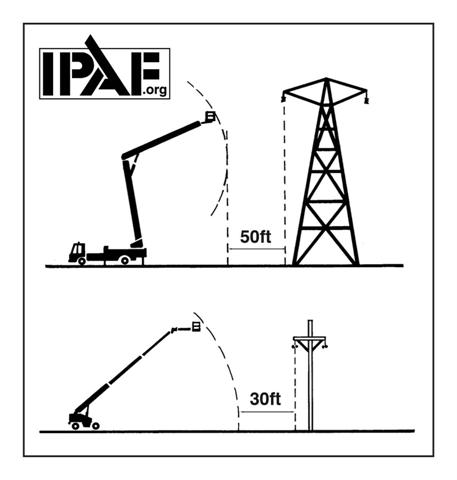 The dangers of overhead power lines |
United States incidents involving aerial work platforms (AWPs) electrocuted seven people during 2013, according to the International Powered Access Federation (IPAF).
Chris Wraith, IPAF technical officer, says, "In 2013, all seven reported cases of electrocution worldwide occurred in the US, where the AWP rental fleet is estimated at 510,500, which is 54% of the world rental fleet." The findings are from IPAF's accident reporting project and Powered Access Rental Market Reports, scheduled for distribution in April.
"Operators or supervisors are often not in a position to know the voltage in the power source," says Tony Groat, IPAF North America manager. "Knowing the voltage is essential to determine the minimum approach distance (MAD), which is the safest distance a person who has not had specific training in avoiding electrical hazards should approach 'live' overhead cables."
The recommended safe distances are at least 50 ft. (15 m) for a fully extended boom from electrical pylons and at least 30 ft. (9 m) for a fully extended boom from cables on wooden poles.
Those distances meet or exceed those specified in standards of the private non-profit American National Standards Institute and requirements of the US Occupational Safety and Health Administration. The recommendations apply to distances until a voltage is determined.
IPAF demonstrated safe and minimum approach distances in a dynamic "life safety zone" display at the ConExpo-Con/Agg trade show from 4-8 March in Las Vegas, Nevada.
The non-profit IPAF is based in Crooklands and, for North America and the United States, has a membership office in Glen Ellyn, Illinois and subsidiary American Work Platform Training Inc in Schenectady, New York.